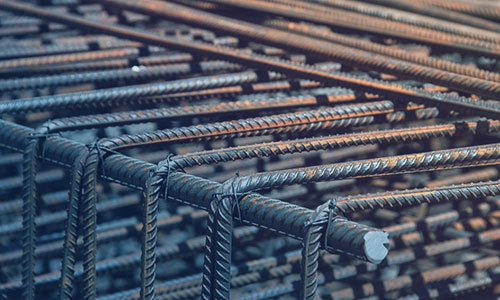News and Updates
Does your reinforcing steel comply? Is any old reinforcing bar OK?
23-Oct-2023
Those using reinforcing steel should know that it is required to meet the Australian New Zealand Standard AS/NZS 4671:2019 (the standard). For 20 years ACRS has certified reinforcing steel to this standard and in that time has gathered visibility over the numerous types of steel products sold within the market. Unfortunately, it has been observed that reinforcing bar (rebar) material is being sold that claims to meet the AS/NZS 4671, but is tagged as ‘Non-Structural’ and claims to meet the 500L properties or does not specify a grade.
The standard indicates that the ‘Non-Structural’ classification applies only to specific mesh designs available in New Zealand, and not to any straight reinforcing bar. The classification of 500L is also only applicable for mesh for reinforcing fabric.
Reinforcing Bar as listed in the standard must be grade 500N. The 500N grade has some ability to stretch under load prior to fracture, while the 500L may fail with little, if any, warning. Only the 500N grade is nominated in the Australian Design codes to meet Australian building design standards. The 500L grade is not specified in any standards for straight lengths of reinforcing bar, and therefore any rebar of 500L is noncompliant for any slab or structure built to the design standards.
Reinforcing Bar is made available off the shelf in materials such as ‘general purpose bars’, ‘corner bars’, and ‘starter bars’. So what is the purpose of these products?
‘General purpose bars’ are defined as “having a range of uses or applications and not restricted to one function”, inferring that they can be used anywhere reinforcing is required. The ‘general purpose’ bars assume that the bar is a 500N to meet the design specifications.
‘Corner bars’ are bent to 90 degrees and therefore are a processed bar. As such, they must meet the bending requirements set out in the standard, including being bent around a mandrel size appropriate to the bar’s diameter. Using an incorrect mandrel size may lead to fracture in the bends thus reducing capacity, but the use of the 500L material may see cracking in the in the bar when bent around the nominated mandrel which thus reduces the resilience of the structure.
‘Starter bars’ are typically used to tie reinforced masonry or concrete walls to slabs or footings. Here the ductility of the 500N bar is important as more brittle steel may lead to fracture and failure of the slab wall intersection.
So in all three cases, to ensure resilience and public safety, the 500N class reinforcement is specified. 500L grade reinforcement bar is limited for use in meshes only.
How can you verify conformity?
Given the discrepancies we have observed between what is claimed on tags and the formal requirements of the standard, you may not be able to rely upon a tag alone that claims a product meets an Australian standard. So how can you ensure that reinforcing bar purchased and installed is likely to meet the requirements of the standard?
Purchasing material from ACRS-certified manufacturers enables you to be assured that the manufacturer has been independently verified as producing compliant steel. To acquire ACRS certification, a manufacturer must meet all the requirements of AS/NZS 4671:2019, and by demonstrating compliance to this standard, the material should then meet the relevant minimum building design requirements of the National Construction Code (NCC) of Australia and the Building Code of New Zealand (BCNZ).
ACRS certification helps ensures that manufacturers are compliant with the Australian and New Zealand standards, looking at a wide range of variables including geometry, ductility strength, constitution of the steel, grade markings on bar, and traceability, as specified in the standard.
Purchasing material from ACRS-certified manufacturers and processors is the best assurance available that the reinforcing steel you purchase meets relevant Australian standards. See all ACRS-certified processors and manufacturers here>